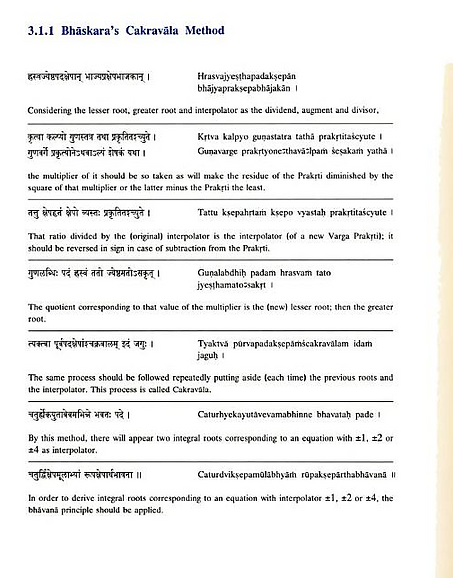Bhaskara II - 1114 to 1185 AD

Bhaskara II was the head of the astronomical observatory at Ujjain, the leading mathematical centre of ancient India. In this books Lilavati ("The beautiful") and Bijaganita ("Seed Counting") he mainly compiled problems from older mathematicians and filled in the gaps of their knowledge, specifically Bhramagupta's. Without his work, understanding the works of Aryabhata and Bhramagupta would be nearly impossible.
Lilavati, considered an indispensable resource of Indian mathematics, was created by Bhaskara for his daughter, Lilavati to practice math. Look at that! A little girl was better at math than you! Bhaskara starts with the definition of mathematical concepts that would come later in the book. He also used Bhramagupta's work to explain the properties of zero, and started to understand division with 0. He also did extensive work on negative numbers, surds and explained the conventions of signs (negative by negative make positive; negative by positive make negative).
Further, he gives solutions and rules of quadratic, cubic and interminate equations (of 1st and 2nd degree), with negative and irrational solutions; an improvement of the methods of Aryabhata. . Which are the same as those given by the Renaissance European mathematicians almost 5 centuries later. He also used letters to signify unknown quantities, much like modern algebra. Moreover, Bhaskara also derived a cyclic Chakravala method for solving interminate equations of the form a2+bx+c = y. However, the solution of this equation was initially attributed to William Brounuker in 1657 (though the Brounuker method was more difficult) it also known as the Charavala method. Using this method, he found solutions to Nx2+1=y2, continuing the work of Bhramagupta. Here is an insert from the book Pride of India: A Glimpse Into India's Scientific Heritage explaining his method in more detail.

n 1150, Bhaskara wrote Siddhanta Shiromani which illustrates Bhaskara's knowledge of trigonometry, including the sine table and relationships between different trigonometric functions. Unlike his predecessors, Bhaskara found trigonometry interesting for itself, and not just a tool for calculations (I feel the start of a romcom right here) and found many interesting results, because only he, truly understood trigonometry. His work found various computations of sine of angles 18 and 36 degrees and the now well-known formula of sin(a+b) and sin(a-b).
This work also contains preliminary concepts of infinitesimal calculus and integral calculus. He does deeper into differential calculus and implies that the differential coefficient vanishes at an extremum value of the function or the modern concept of infinitesimals.
References:
-
"Bhāskara II". En.Wikipedia.Org, 2015, https://en.wikipedia.org/wiki/Bh%C4%81skara_II. Accessed 9 Dec 2020.
-
"Bhāskara Ii | The Great Indian Mathematician". Cuemath, 2021, https://www.cuemath.com/learn/bhaskara-ii/#P003. Accessed 11 Dec 2020.
-
“Bhāskara II | Indian Mathematician | Britannica.” Encyclopædia Britannica, 2021, www.britannica.com/biography/Bhaskara-II. Accessed 9 Dec. 2020.
-
Bhaskara II - History, Biography, and Accomplishments.” The Story of Mathematics - a History of Mathematical Thought from Ancient Times to the Modern Day, 7 Apr. 2020, www.storyofmathematics.com/bhaskara-II. Accessed 9 Dec, 2020.
